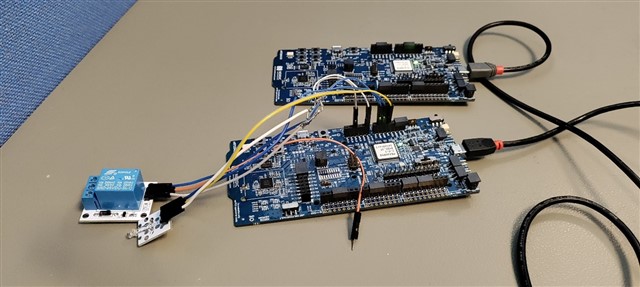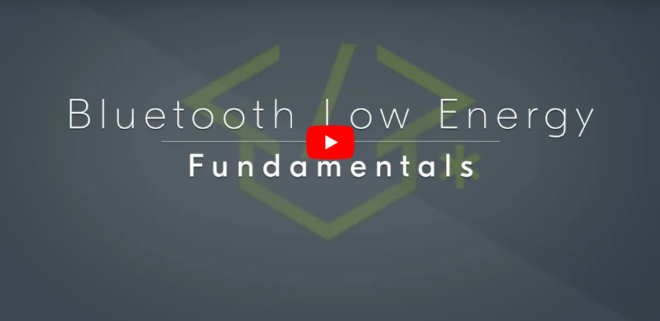Members of the Bluetooth® community are continuously innovating. Over the last two decades, members have significantly improved the capabilities of Bluetooth technology, providing developers with a high degree of flexibility and allowing them to use the technology for a variety of solutions – from audio streaming and data transfer to location services, networked lighting control, and more.
In a recent presentation delivered earlier this year, Mohammad Afaneh, senior developer relations manager for the Bluetooth Special Interest Group (SIG), compares Bluetooth technology to a Swiss Army knife and talks about why IoT developers value its flexibility, choosing Bluetooth technology over other competing options.
Why Choose Bluetooth Technology
In addition to the flexibility Bluetooth® technology provides, it has a long track record of successfully adopting to market needs, is widely used across many global environments, and continues to innovate for new use cases and applications. “Bluetooth has proven to be a technology that many companies choose to go with, without hesitation,” says Afaneh.
“Bluetooth has proven to be a technology that many companies choose to go with, without hesitation.”
The Bluetooth SIG also has full control over the complete technology stack. If multiple member companies want to make changes to any part of the stack, this can be done without consulting or involving outside organizations. This allows the Bluetooth SIG to innovate quickly and make changes down at the radio level while still guaranteeing backwards compatibility for existing products.
Another important advantage of Bluetooth technology is its ubiquitous support on smartphones. “Bluetooth technology is supported on 100 percent of new smartphones released each year,” said Afaneh.
Plus, nearly every release of a Bluetooth specification introduces capabilities that support new use cases and expand into different industries. As a result, Bluetooth technology, especially Bluetooth Low Energy (LE), has become highly flexible, allowing IoT developers to use it for a wide variety of applications.
Bluetooth Use Cases and Case Studies
In his presentation, Afaneh cites a few examples and case studies that showcase the flexibility for Bluetooth® technology across several demanding IoT environments.
The Largest Bluetooth Mesh Lighting Control Installation in the World spans 17 floors of an office building with 3,685 Bluetooth Mesh lighting controllers. This installation has no single point of failure and uses the publish/subscribe message pattern to allow facility managers to add or remove mesh nodes without affecting the overall functionality of the network or causing and downtime.
Bluetooth beacons is another popular use case for Bluetooth technology. Beacons are small Bluetooth devices that typically only transmit data. The two most well-known use cases for Bluetooth beacons are indoor navigation solutions where GPS is limited and commercial and consumer sensor tags used to track or locate valuable items.
Quuppa partnered with Wisehockey to create a real-time system for tracking hockey players and the hockey puck. This system also allows for the collection of sensor data from player heart rates to body temperatures. Williot developed a battery-free Bluetooth tag powered through energy harvesting. Afaneh says that this tag is designed to be extremely low cost, so much so that it can be used to tracked disposable items such as a carton of milk or eggs.
Bluetooth LE Audio
One of the most exciting innovations of Bluetooth® technology is Bluetooth LE Audio. This next generation of Bluetooth audio will support a brand-new set of exciting features and use cases for wireless audio, including Auracast™ broadcast audio.
“Another great use case is being able to listen to audio in different languages, streaming it directly to your earbuds.”
Auracast™ broadcast audio will support personal and location-based audio sharing. Personal audio sharing allows you to share your listening and viewing experience with others around you. With location-based audio sharing, you will be able to tune into audio being broadcast from TVs in airports, hospital waiting rooms, gyms, sports bars, and more, directly streaming that audio into your Bluetooth earbuds.
“Another great use case is being able to listen to audio in different languages, streaming it directly to your earbuds,” said Afaneh. “Whether that’s from public TVs, conferences, or even watching movies and cinemas and theaters.”
Afaneh says that while no technology is a one-size-fits-all solution, Bluetooth technology has adapted to provide developers with high flexibility and is continuously expanding into new markets and verticals.
Check out these developer resources to learn more about how Bluetooth technology provides a comprehensive tool set for developers.
![]()
FEATURED INNOVATION
Bluetooth LE Audio
Bluetooth LE Audio will enhance the performance of Bluetooth audio, add support for hearing aids, and introduce Auracast™ broadcast audio, an innovative new Bluetooth capability with the potential to once again change the way we experience audio and connect with the world around us.































